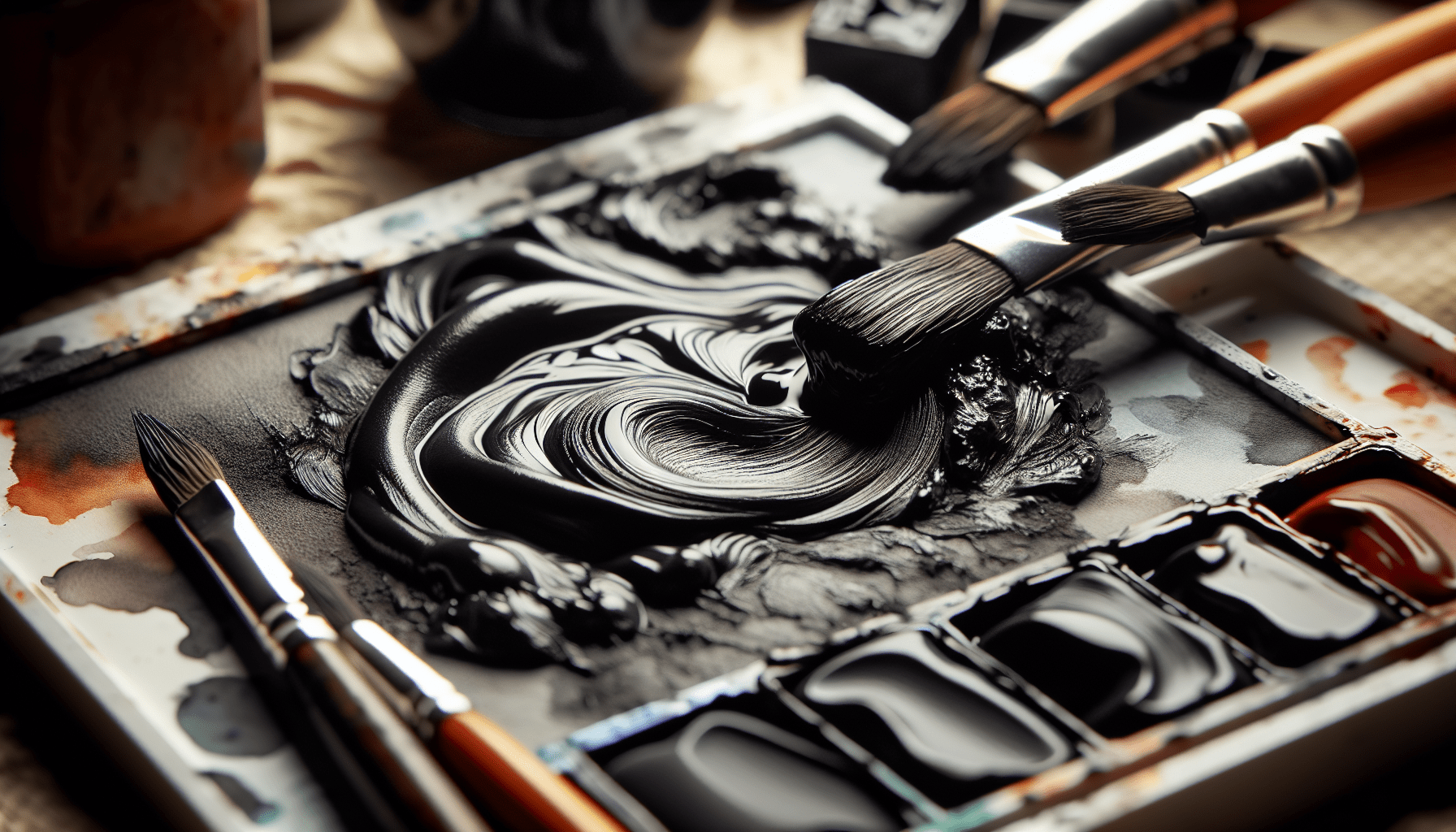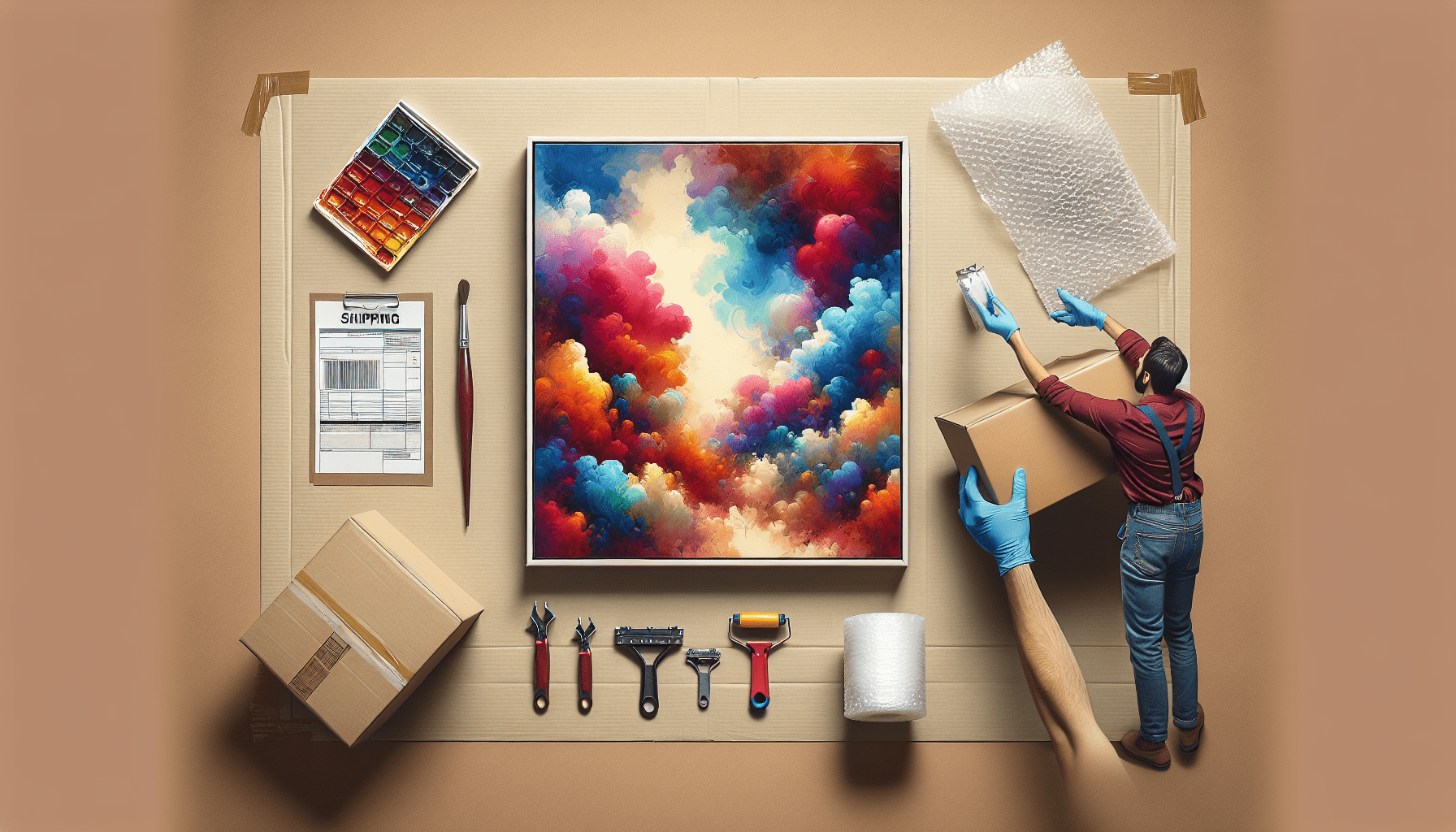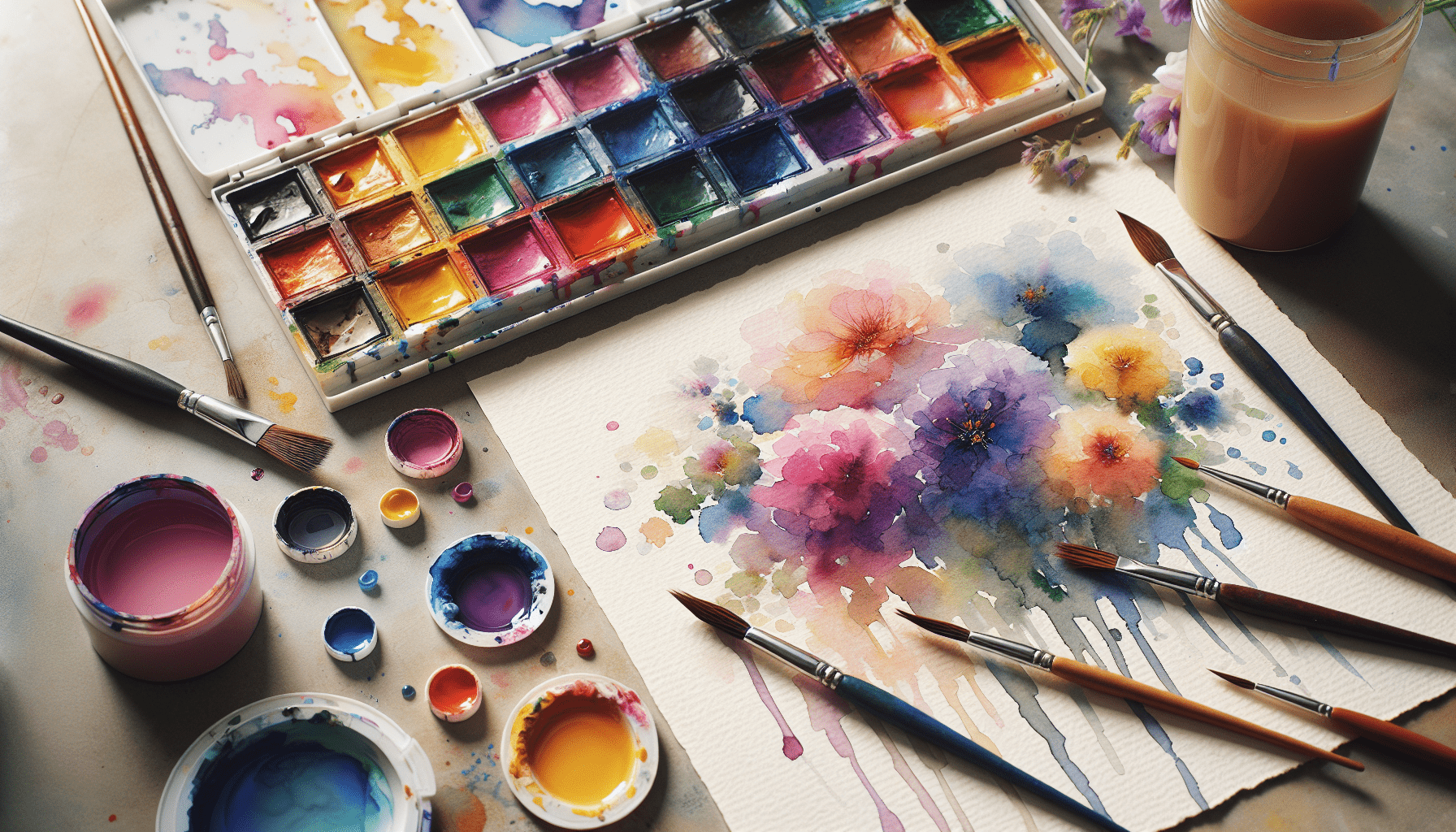In the article “How To Make Black Watercolor Paint,” you will discover a comprehensive guide on creating rich, black watercolor paint using simple techniques and readily available materials. This piece delves into the art of combining primary colors in precise ratios, providing you with step-by-step instructions to achieve the perfect hue. Additionally, it covers essential tips for mixing, testing, and storing your handcrafted paint, ensuring consistency and quality in your artistic endeavors. Whether you are an experienced artist or a beginner, the insights provided will enhance your creative palette and enable you to produce stunning, professional-quality works. Have you ever found yourself needing black watercolor paint but didn’t have any on hand? Whether you’re an experienced artist or a beginner in watercolor painting, knowing how to create your own black watercolor paint can be an invaluable skill. This guide will provide you with all the necessary steps and information to create various shades of black watercolor paint right from the comfort of your studio.
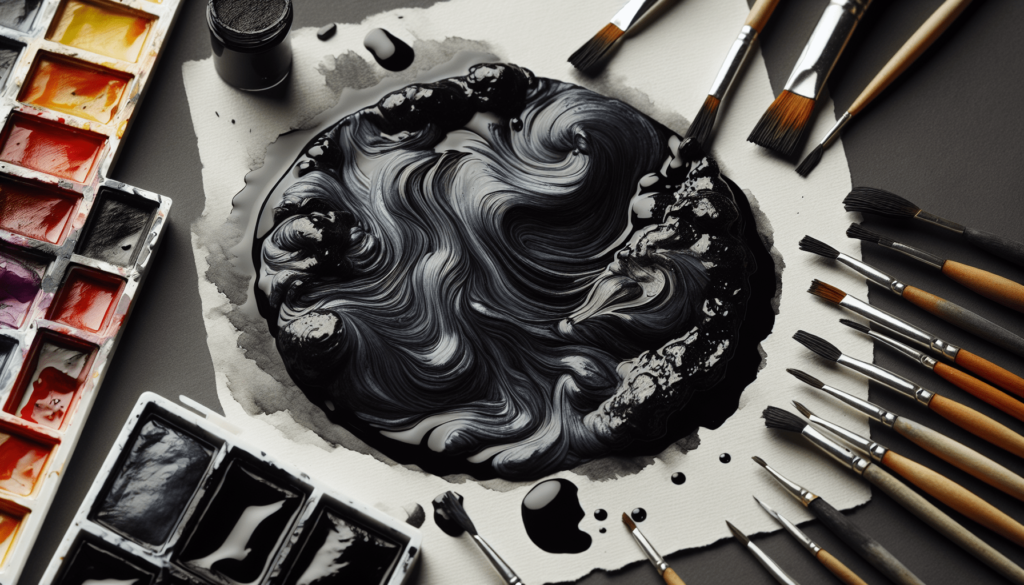
Understanding the Basics of Watercolor Paint
Before diving into the process of making black watercolor paint, it’s essential to understand what watercolor paint is and how it works.
What is Watercolor Paint?
Watercolor paint is a type of pigment suspended in a water-soluble binder, typically gum arabic. When you add water to this paint, it reactivates, allowing for fluid and transparent color applications. The water-based composition makes it a versatile medium for creating gradients, washes, and intricate details.
Why Black is a Unique Color in Watercolor
In watercolor painting, black is often used to add depth, create shadows, or mix with other colors for a darker hue. Unlike other colors, black has a heavy opacity even in watercolors, and overly heavy applications can sometimes overpower a composition rather than complement it. This unique property makes knowing how to create various blacks crucial for artistic finesse.
Essential Materials for Creating Black Watercolor Paint
Before you start, gather the following materials:
- Primary Watercolors: Red, Blue, and Yellow
- Palette or Mixing Tray: For blending the colors
- Brushes: For mixing and testing the shades
- Water: For mixing and dilution
- Paper Towels: For blotting and cleaning
- Sample Paper: For testing the colors
Primary Methods to Create Black Watercolor Paint
There are several ways to create black watercolor paint, generally involving mixing primary colors in specific ratios. Here are the most common methods:
Mixing Complementary Colors
Complementary colors are pairs of colors that, when combined, cancel each other out. Here are the mixtures you can use:
| Complementary Colors | Ratios | Resulting Black Shade |
|---|---|---|
| Blue and Orange | 1:1 | Neutral Black |
| Red and Green | 1:1 | Warm Black |
| Yellow and Purple | 1:1 | Cool Black |
- Blue and Orange: Mix equal parts of blue and orange. This generally creates a neutral black, balanced between warm and cool.
- Red and Green: Mix equal parts of red and green. This mixture often results in a warmer black.
- Yellow and Purple: Mix equal parts of yellow and purple. This typically produces a cooler black.
Mixing Primary Colors
Black can also be created by mixing all three primary colors in equal ratios.
| Primary Colors | Ratios | Resulting Black Shade |
|---|---|---|
| Red, Blue, Yellow | 1:1:1 | Neutral Black |
- Red, Blue, and Yellow: Combine equal parts of all three primary colors. The resulting black will usually be more neutral.
Adding Neutral Tint or Payne’s Grey
If blending primary and complementary colors seems daunting, you can achieve a black watercolor paint by adding a neutral tint or Payne’s Grey to darken other colors.
| Color | Additive | Ratio |
|---|---|---|
| Blue | Neutral Tint | 2:1 |
| Red | Payne’s Grey | 2:1 |
| Yellow | Payne’s Grey | 2:1 |
- Neutral Tint: Add this to any dark color to deepen it without changing the hue.
- Payne’s Grey: Similarly, this deepens colors but tends to maintain a slight bluish tint, depending on the ratio.
Practical Steps for Mixing Your Black Watercolor Paint
Step-by-Step Process for Mixing Complementary Colors
- Prepare Your Palette: Ensure your palette is clean to avoid unintended color contamination.
- Select Colors: Choose the complementary colors you intend to mix.
- First Ratio Test: Start with a 1:1 ratio of your chosen colors.
- Mix Thoroughly: Use your brush to mix the colors thoroughly in the palette.
- Test on Paper: Brush the mixture onto your sample paper to check the shade.
- Adjust if Necessary: Tweak the ratios slightly if the black is too warm or too cool for your liking.
Step-by-Step Process for Mixing Primary Colors
- Prepare Your Palette: Like before, ensure your palette is clean.
- Add Equal Parts: Start with equal parts of red, blue, and yellow.
- Mix and Test: Mix the colors completely and test them on your sample paper.
- Adjust for Balance: If one color dominates, add small amounts of the other two colors to balance it out.
Transparency and Opacity Settings
Black can be significantly affected by its transparency or opacity. To manage this:
- Water Ratios: Increasing water can make the black more transparent.
- Layering: Multiple layers can help achieve the desired opacity.
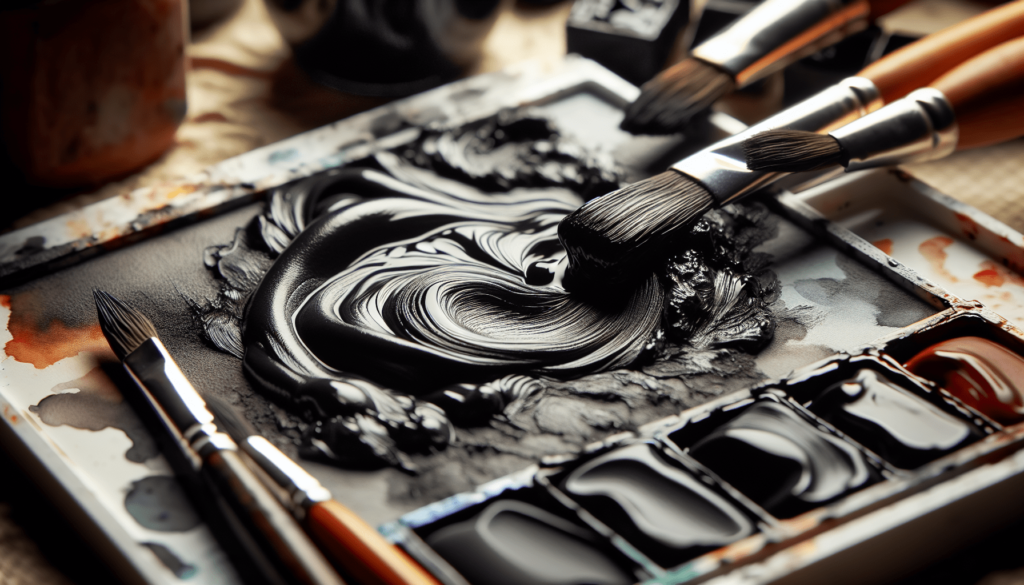
Special Techniques for Unique Black Shades
To achieve unique shades of black, consider these special techniques:
Glazing
This involves adding transparent layers over a dried section of black to enrich the depth.
- Base Layer: Apply your mixed black as a base layer.
- Glaze Over: After the base layer dries, apply another wash of a different color to modify the black’s hue.
Wet-on-Wet Technique
This technique can create softer edges and blends.
- Wet Paper: Dampen the section of the watercolor paper where you want to add black.
- Apply Black: Apply your black watercolor while the paper is still wet, allowing it to blend smoothly.
Wet-on-Dry Technique
For sharp, defined edges:
- Dry Paper: Ensure your paper is dry before application.
- Apply Black: Apply the black to maintain crisp edges.
Combining Blacks for Varied Textures
Creating both a warm and cool black and then applying them in your compositions can add varied textures. For instance, use warm black for areas intended to appear closer, and cool black for shadows and areas meant to recede.
Sample Scenarios Using Black Watercolor Paint
| Scenario | Recommended Black | Technique |
|---|---|---|
| Night Sky | Deep Neutral Black | Wet-on-dry with layering |
| Shaded Trees | Cool Black | Wet-on-wet blended background |
| Still Life with Shadows | Warm Black | Glazing over base layers |
| Monochromatic Portraits | Range of Blacks | Layered washes and glazes |
Troubleshooting Common Issues
As with any painting technique, you might face some challenges. Here’s how to tackle common issues when creating black watercolor paint:
Issue: Overpowering Black
Black can sometimes overwhelm lighter colors.
Solution: Always mix black with a small amount of the lighter color and gradually increase until the desired darkness is achieved.
Issue: Muddy Colors
Mixing too many pigments can lead to a muddy, unappealing black.
Solution: Stick to fewer pigments and test frequently. Clean your palette and brushes regularly to avoid contaminating colors.
Issue: Streaky Appearance
Black might appear streaky or uneven.
Solution: Ensure the paint is thoroughly mixed and the application is consistent. Use a good quality brush to help maintain even strokes.
Storing and Using Your Homemade Black Watercolor Paint
After successfully creating your black watercolor paint, proper storage can ensure its longevity:
Storage Tips
- Air-tight Containers: Store your mixed black paint in air-tight containers to prevent it from drying out.
- Labeling: Label your containers with the mixing ratios used, making it easy to recreate or adjust the mixture as needed.
- Cool, Dry Place: Store in a cool, dry place away from direct sunlight.
Usage Tips
- Mix Small Batches: Only mix what you need for a session to keep your paint fresh.
- Reactivating Dried Paint: If your black paint dries out, you can usually reactivate it by adding water.
Final Thoughts
Creating your own black watercolor paint gives you control over your artistic process, allowing for personalized, nuanced, and unique compositions. Experimenting with different ratios, transparency settings, and techniques can open up a world of possibilities. Keep practicing, and remember that the journey of discovery in art is as important as the final outcome.
By mastering these methods, you’ll not only save yourself a trip to the art store, but you’ll also enrich your understanding of color theory, enhancing your overall skill as an artist.
